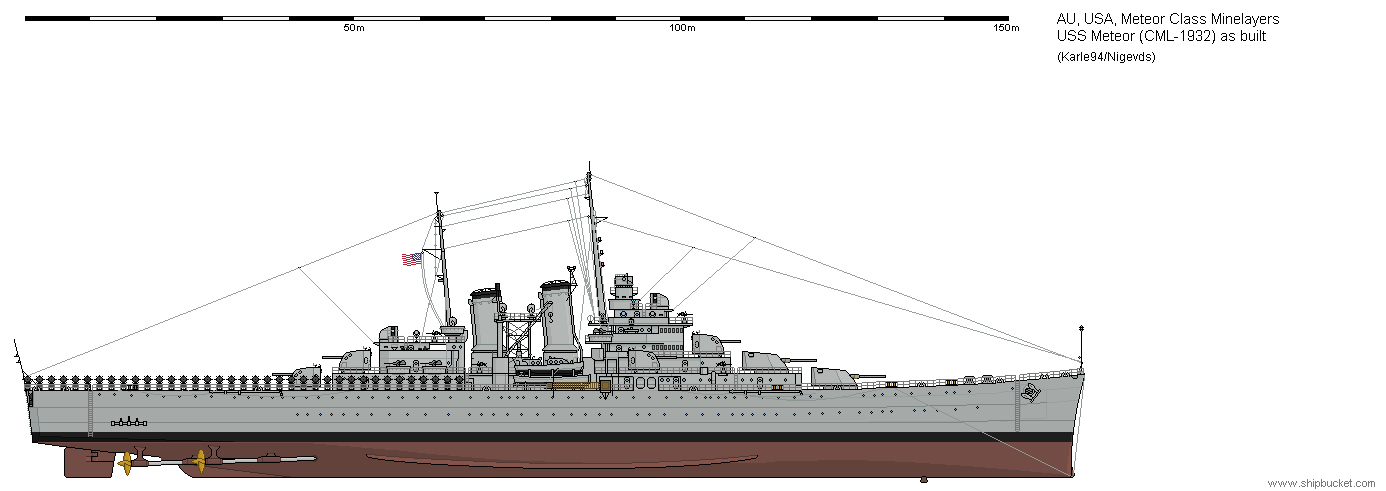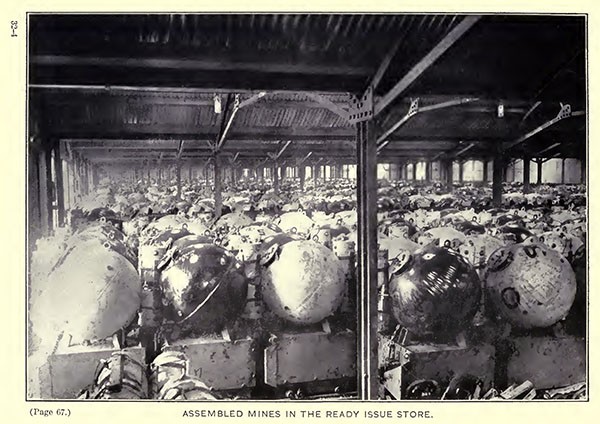The US Navy had the Akron as its minelayer up till the Akron's accidental loss. The Akron had been an offensive minelayer, but the US Navy knew that it also needed defensive minelayers as well. Numbers of ships were likely to be two on the East Coast, two on the West Coast, one for the Hawaiian Islands and one in the Philippines area. Being defensive minelayers the ships would not need the high speed of the offensive minelayers. Something in the 26-30 knot region would give them a fast enough radius of action. A cut down cruiser with machinery subordinated to mine carrying capacity.

The US Navy made sure these ships were armed well enough to be able to look after themselves. Two triple 6" forward and five twin 5"/38cal dual purpose turrets both fore and aft. While the ships main mission was creating minefields it was felt that the ships would be able to multi-role as disaster relief ships, where the huge mine deck could be used to carry relief supplies in and wounded out or as then static power plant for the shore requirements. They could also be used as commando cruisers where the mine deck would carry the troops to be landed on an island or coast to interdict enemy forces where they least expected them. This bore fruit almost immediately as the Meteor doing acceptance trials went to New Orleans where it was filled with supplies for disaster relief in the British Honduras after the 1931 Hurricane.
Those ships remaining, after the initial Japanese onslaught, did not receive their 40mm upgrades until well into 1943. There were a lot of higher priority vessels than the four minelayers left. What happened to the other two? Both exploded in spectacular fashions as Japanese aircraft caught them in harbour, where they were most vulnerable. Comet was at Pearl Harbour on the morning of December 7th, taking on mines to lay a defensive field at Midway Island. It took only one bomb to hit the ship to cause major collateral damage as the mines aboard and those in the mine bunker exploded. Infrastructure and people for 400 yards around the ship received fatal damage. There was just a hole where the ship and docks had been. Meteor was at Cavite Bay when it was attacked by Japanese aircraft, and like the Comet, the Meteors end was horrific. Terror and Perisher were fully involved in the European Theater. Were a part of the Torch landings, then the clearance of the Mediterannean and finally D-Day. The ships were used for Commando/Ranger raids along the coasts of Europe, with some success. Neptune and Poseidon were used in the Pacific and laid many fields around the Islands that were use as the Fleet Trains forward bases to stop Japanese submarines being able to penetrate the harbour areas.
All four were a part of the 'Magic Carpet' exercises for bringing the US serviceman home from their overseas postings. These ships were particularly good at this with their large mine decks partitioned up. Terror and Perisher were placed in reserve in 1948 and never reactivated, being scrapped in 1954. Poseidon and Neptune were placed in reserve also in 1948, but were reactivated in 1950 for the Korean War. On the end of that war and another stint of returning servicemen to the US the ships were also deleted and scrapped in 1955.
